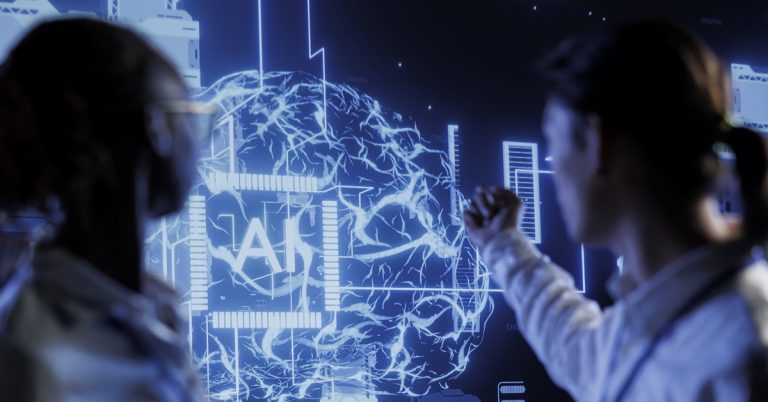AI Job Disruption In Malaysia: Is Your Job On The Line In 2026?

AI has been in the headlines all over the world for quite a few years now and Malaysia is no exception. What began with simple chatbots on banking apps and recommendation engines on e-commerce platforms has now matured into far more advanced systems. Today, AI tools are being trialled in Malaysian law firms to review contracts, introduced in hospitals to assist radiologists with scan analysis and even tested by local marketing agencies to generate entire campaign concepts.
The pace of AI adoption is accelerating across the country. A recent survey by the Malaysia Digital Economy Corporation (MDEC) highlighted that nearly 80 per cent of Malaysian businesses have either adopted or plan to adopt AI within the next three years. This shift mirrors global forecasts, which warn that between 85 and 92 million jobs could be reshaped or replaced by the end of the decade, even as new, AI-driven roles are created in parallel.
For Malaysia’s workforce, the question is not if disruption will come but how soon it will hit core sectors like manufacturing, finance, retail, and healthcare. Manufacturing is especially exposed, with automation threatening thousands of mid-skilled jobs, while SMEs may struggle to retrain staff in time. AI’s impact will reach beyond white-collar roles into the country’s industrial backbone, making adaptation and reskilling essential as human skills and machine intelligence increasingly overlap.
A turning point in technology and employment
In 2026, companies are not only experimenting with AI but making it central to their business models. Banks are using AI to detect fraud with higher accuracy than human teams. Retailers are applying predictive analytics to decide stock levels and personalise promotions. Even creative sectors, such as advertising and design, are deploying AI to generate campaign ideas in minutes rather than weeks.
For workers, this means the conversation is shifting from curiosity to concern. The future of work is no longer about if AI will disrupt jobs, but how fast and how broadly.
Which jobs are most vulnerable?
Roles that involve routine, repetitive tasks are most exposed to automation and face the highest risk of AI job disruption in Malaysia. Data entry clerks, customer support staff, and telemarketers are already seeing reduced demand as AI systems can perform their functions faster and at lower cost. The World Economic Forum estimates that millions of such jobs could disappear globally by the end of this decade.
Middle-skilled roles are also under pressure. Paralegals now rely on AI to draft standard contracts in seconds, while junior analysts in finance and consulting watch software process reports that once took them days. In healthcare, AI is increasingly supporting tasks such as analysing X-rays and detecting anomalies in blood tests.
Yet the story is not one of universal loss. Jobs requiring empathy, problem-solving, and hands-on skills, such as nursing, teaching, electrical work, and therapy, remain harder to automate and may even see rising demand. At the same time, the scope of many roles is shifting. Junior finance analysts spend less time crunching numbers and more time interpreting AI reports, while customer service agents now focus on complex cases that require human understanding.
Opportunities created by AI
AI job disruption is not only about loss, it is also creating new categories of work. Roles, such as AI trainers, ethicists, and explainability specialists barely existed five years ago but are now growing rapidly. Demand for cybersecurity and data governance experts is also rising as organisations manage AI safely.
At the same time, existing jobs are being reshaped. Marketing executives, for example, spend less time segmenting customers and more time using AI insights to design campaigns. In this way, AI augments human capacity rather than replacing it.
This shift makes lifelong learning essential. Upskilling in digital tools, data analysis, and AI literacy is now critical, while employers that invest in training gain a competitive edge by blending human expertise with technology. Employment patterns will evolve in parallel: some workers may face redundancy in routine roles, but others will move into growth fields such as AI ethics, data governance, and cyber resilience. The challenge is helping workers transition before displacement occurs.
Regional perspectives
In Southeast Asia, governments are launching AI frameworks to drive growth while also preparing their citizens for disruption. Malaysia has highlighted digital skills as a national priority, offering training grants to equip workers for the future economy. Singapore, meanwhile, has rolled out schemes to reskill mid-career workers into tech-enabled roles.
These initiatives underline a critical truth: policy plays a central role in shaping how societies absorb technological change. Countries that proactively support workers through retraining and social safety nets are more likely to see AI as a net positive, while those that ignore the risks could face rising inequality and unemployment.
Preparing yourself for 2026 and beyond
For individual workers, the best defence against uncertainty is adaptability. Here are practical steps to consider:
- Learn continuously: Even short online courses in AI basics or data literacy can improve your employability.
- Focus on human skills: Communication, creativity and critical thinking are harder to automate and will remain in demand.
- Stay informed: Following industry trends allows you to anticipate changes before they arrive at your workplace.
- Be open to change: Career paths may no longer be linear. Being flexible about roles and industries can help you stay resilient.
Conclusion
The prospect of AI job disruption in 2026 is not a distant scenario but an unfolding reality. Certain roles will disappear, others will evolve, and entirely new careers will emerge. Workers who remain passive risk being left behind, while those who embrace learning and adaptability can thrive in the changing landscape.
Ultimately, the future of work is not about competing with machines but about finding ways to complement them. The coming years may challenge traditional notions of career stability, but they also offer an unprecedented chance to reshape how we work, live, and contribute to society.









